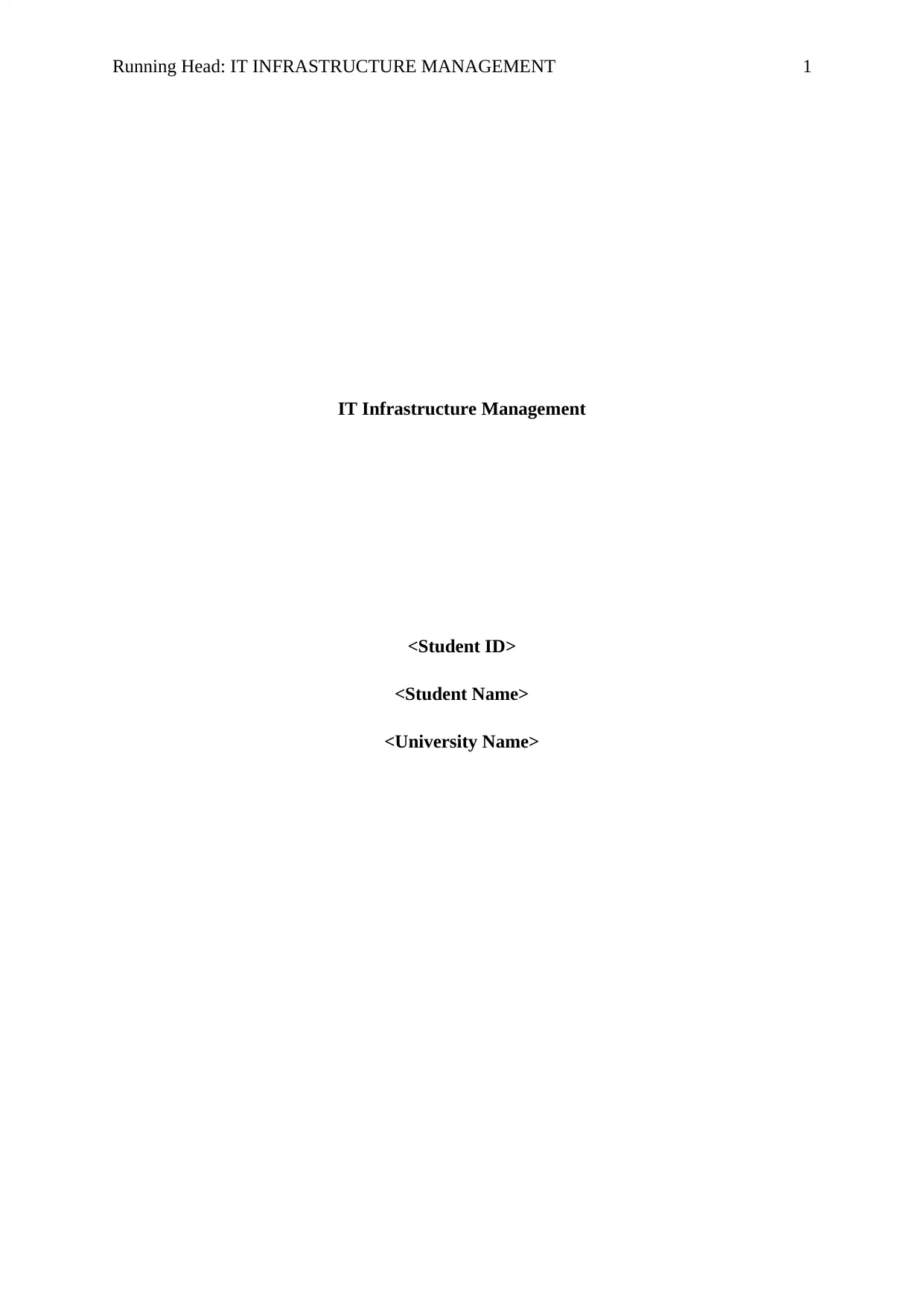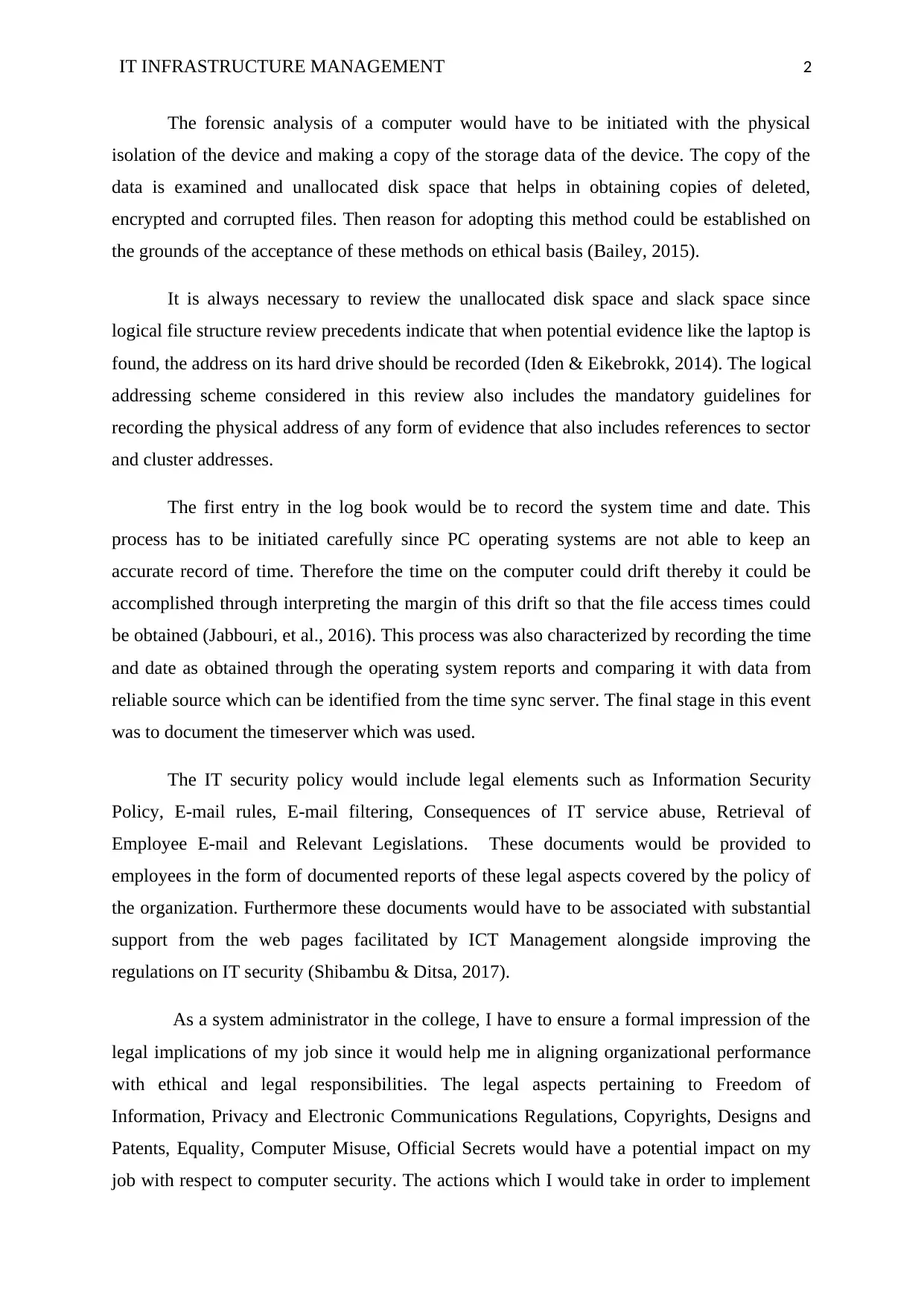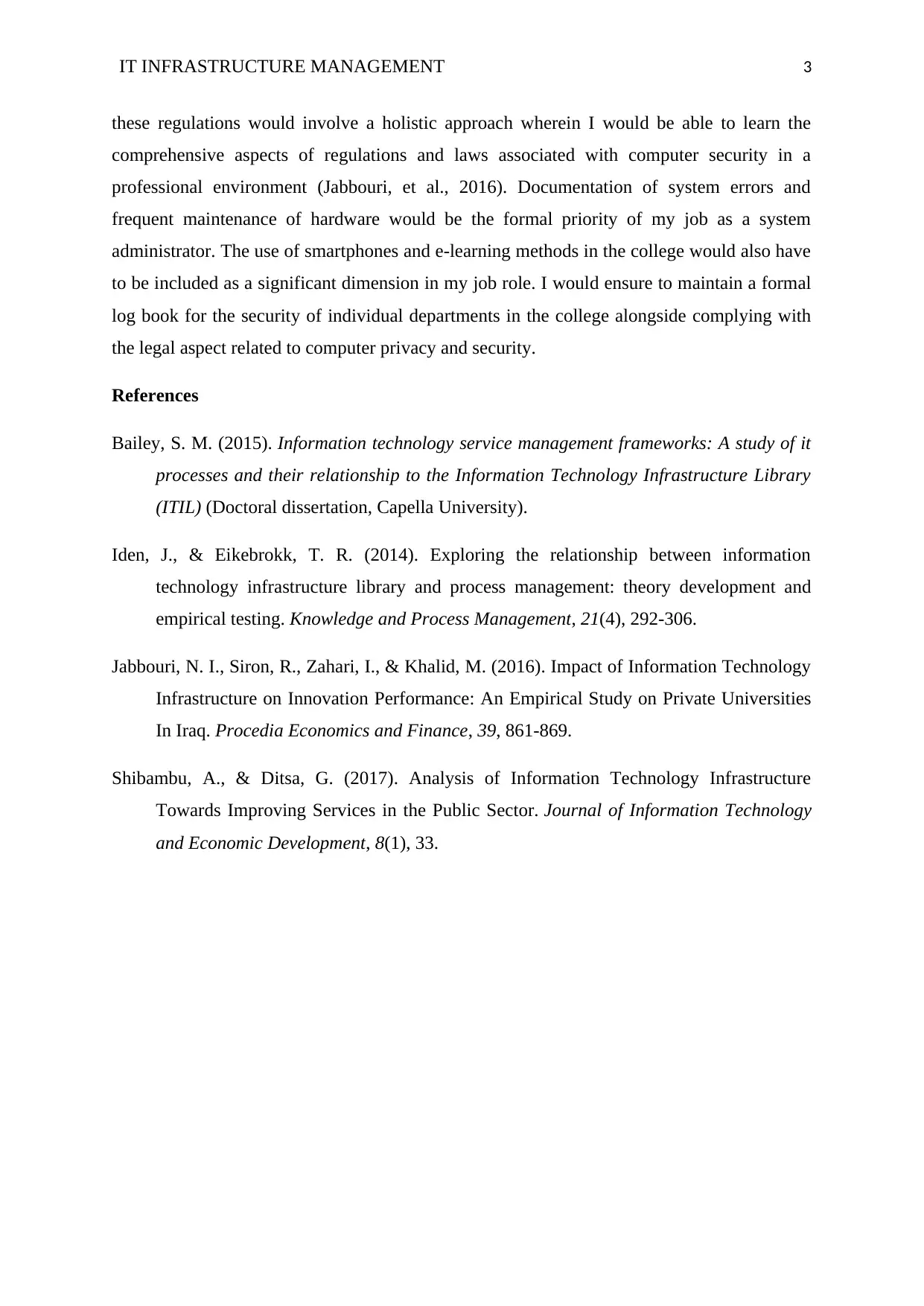IT Infrastructure Management Report: Forensic Analysis and Policy
VerifiedAdded on 2020/05/11
|3
|784
|79
Report
AI Summary
This report delves into the critical aspects of IT infrastructure management, beginning with a forensic analysis of a computer, emphasizing the importance of isolating the device and creating a copy of the storage data for examination of deleted, encrypted, and corrupted files. The report highlights the necessity of reviewing unallocated disk space and slack space, aligning with ethical considerations and logical file structure review precedents. It emphasizes the need to record system time and date accurately, acknowledging potential time drift and the importance of comparing system time with a reliable source. The report also addresses IT security policy, including legal elements such as Information Security Policy, E-mail rules, and relevant legislations. The role of a system administrator is examined, emphasizing the legal implications, including Freedom of Information, Privacy and Electronic Communications Regulations, and Copyrights. The report concludes by outlining the implementation of regulations through a holistic approach, documentation of system errors, and the integration of smartphones and e-learning in the college setting, alongside the maintenance of a formal log book for security.
1 out of 3







![[object Object]](/_next/static/media/star-bottom.7253800d.svg)